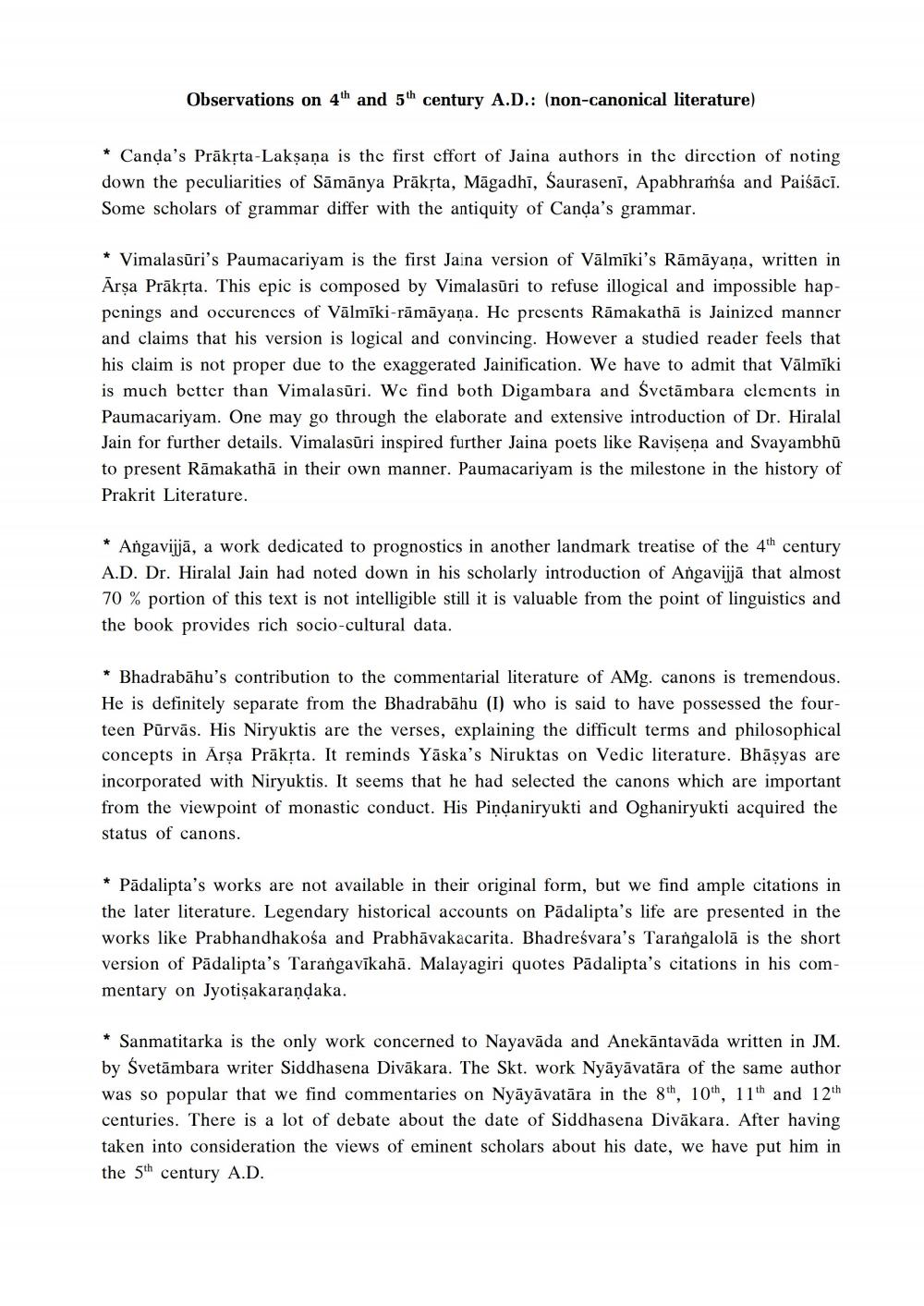________________
Observations on 4th and 5th century A.D.: (non-canonical literature)
* Canda's Prāksta-Lakşaņa is the first cffort of Jaina authors in the direction of noting down the peculiarities of Sāmānya Prāksta, Māgadhī, Saurasenī, Apabhramśa and Paišācī. Some scholars of grammar differ with the antiquity of Canda's grammar.
* Vimalasūri's Paumacariyam is the first Jaina version of Vālmīki's Rāmāyaṇa, written in Ārsa Prākrta. This epic is composed by Vimalasări to refuse illogical and impossible happenings and occurences of Vālmīki-rāmāyaṇa. He presents Rāmakathā is Jainized manner and claims that his version is logical and convincing. However a studied reader feels that his claim is not proper due to the exaggerated Jainification. We have to admit that Vālmīki is much better than Vimala sūri. We find both Digambara and Svetāmbara clcmcnts in Paumacariyam. One may go through the elaborate and extensive introduction of Dr. Hiralal Jain for further details. Vimalasūri inspired further Jaina poets like Ravişeņa and Svayambhū to present Rāmakathā in their own manner. Paumacariyam is the milestone in the history of Prakrit Literature.
* Angavijjā, a work dedicated to prognostics in another landmark treatise of the 4th century A.D. Dr. Hiralal Jain had noted down in his scholarly introduction of Angavijjā that almost 70% portion of this text is not intelligible still it is valuable from the point of linguistics and the book provides rich socio-cultural data.
* Bhadrabāhu's contribution to the commentarial literature of AMg. canons is tremendous. He is definitely separate from the Bhadrabāhu (I) who is said to have possessed the fourteen Pūrvās. His Niryuktis are the verses, explaining the difficult terms and philosophical concepts in Arsa Prāksta. It reminds Yāska's Niruktas on Vedic literature. Bhāsyas are incorporated with Niryuktis. It seems that he had selected the canons which are important from the viewpoint of monastic conduct. His Pindaniryukti and Oghaniryukti acquired the status of canons.
* Pādalipta's works are not available in their original form, but we find ample citations in the later literature. Legendary historical accounts on Pādalipta's life are presented in the works like Prabhandhakośa and Prabhāvakacarita. Bhadreśvara's Tarangalolā is the short version of Pādalipta's Tarangavīkahā. Malayagiri quotes Pādalipta's citations in his commentary on Jyotisakarandaka.
* Sanmatitarka is the only work concerned to Nayavāda and Anekāntavāda written in JM. by Svetāmbara writer Siddhasena Divākara. The Skt. work Nyāyāvatāra of the same author was so popular that we find commentaries on Nyāyāvatāra in the 8th, 10th, 11th and 12th centuries. There is a lot of debate about the date of Siddhasena Divākara. After having taken into consideration the views of eminent scholars about his date, we have put him in the 5th century A.D.




